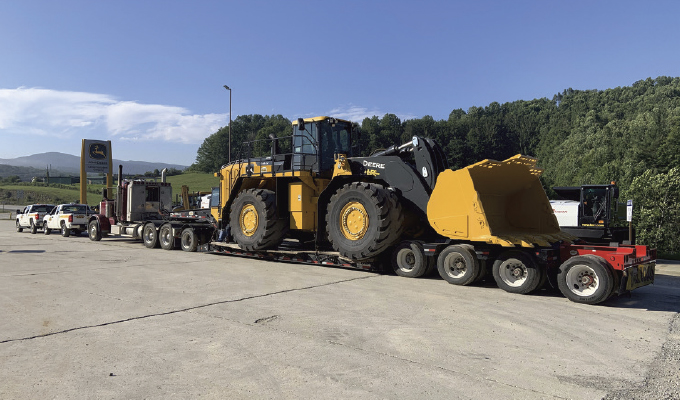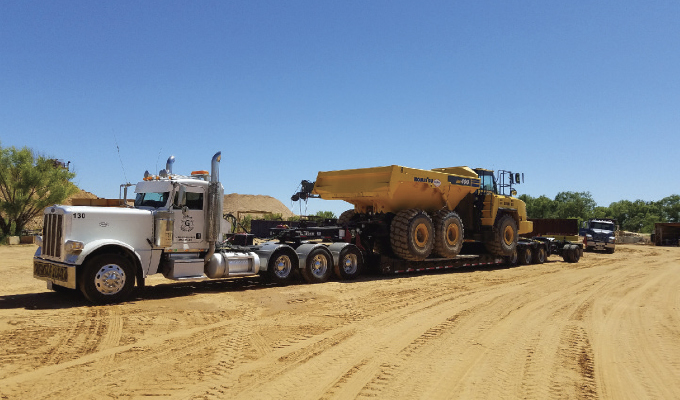For fleet owners looking to standardize their operation, selecting a trailer manufacturer might feel more like picking a favorite sports team than a strategic move to maximize hauling equipment investments. To some extent, it is. Teams with dedicated fans play smart and deliver results year after year. Similarly, original equipment manufacturers (OEMs) who inspire “die-hard” customer loyalty have a proven track record for durable, high-quality products. For savvy fleet owners, who base decisions on spec more than brand, these manufacturers also provide diverse product lines and exceptional customer service that make it easy to jump on the bandwagon.
But how do you pick the right team for your operation? Some equipment needs might be immediate, but the real value of standardization lies in a long-term partnership. Unlike sports affiliation, standardization can significantly impact efficiency and profits for 10, 20, or even 50 years down the road. Fleet owners should carefully weigh their options before making a decision. Not every manufacturer has what it takes to become a dynasty, so to speak, and no amount of rally caps can turn around a poor investment.
Here are four key stats to consider for optimizing trailer fleet standardization.
1. DIVERSE PRODUCT LINE
Consider this: A sports franchise with a deep roster of high-quality players has a better chance of making it to the championship year after year. The same is true when it comes to equipment standardization. A manufacturer with a diverse product line provides flexibility to meet an operation’s unique needs—both now and in the future—maximizing earning opportunities while limiting equipment investments.
Interchangeability is perhaps the most obvious benefit of standardization. Accessories such as axle attachments, axle extensions, deck inserts, or jeeps are often designed to pair with a specific manufacturer’s line of trailers. Purchasing accessories for each individual trailer results in unnecessary expenditures and a lot of equipment lying around the yard. Working with a single manufacturer, on the other hand, means operators can limit accessory investment without limiting potential through proper planning.
For example, an operation might have two lowboys—a 55-ton and a 60-ton—they’d like to run with a fourth axle. It’s important to note that these trailers must be designed to accept a fourth axle from the very beginning, which is why thinking ahead is important. Simply adding another axle onto a trailer that wasn’t designed for it does not increase capacity—and doing so can lead to stress and premature failure. However, if the trailers were designed by the same manufacturer and can each accept a fourth axle, the operator only needs to purchase a single axle attachment to optimize capacity on both trailers. This represents a significant savings.
Standardization can also streamline processes in the maintenance bay. Stocking common components and wear parts for a single brand minimizes the investment and necessary storage space, since manufacturers will often use the same wearables throughout their product line.
2. CUSTOM ENGINEERING
In addition to a diverse product line, OEMs that offer custom engineering can help maximize standardization benefits. Working with the right manufacturer can provide equipment that meets current needs but also allows for future growth, resulting in better ROI for the long haul.
For a small operation just starting out, funds might be tight. An off-the-lot trailer might provide the capacity needed for current applications, but what happens when it’s time to grow? They can’t just add an axle to increase the capacity. And maybe they aren’t ready to invest in another trailer, leaving them stuck.
As in the above example, flexibility can be designed into a trailer, but it must be done at the outset to minimize the trailer’s final weight. This is where working with established OEMs makes a difference. There’s nothing that says all the elements of a custom-designed trailer have to be built right away. Instead, with the future in mind, operators and OEMs can work together to design a trailer that will meet not only immediate hauling needs but also those 5 years down the road. The customer can choose the trailer as a stand-alone purchase initially. As the operation grows and equipment needs change, they can purchase additional components, such as axles, deck inserts or jeeps, to accommodate new applications.

3. HIGH-QUALITY PARTS
As a long-term, forward-thinking strategy, standardization only works if the trailer lasts. Therefore, it’s important to partner with an OEM that uses premier parts and components that can stand up to challenging conditions.
Look for a manufacturing partner that uses materials like heavy-duty T-1, 100,000-psi minimum-yield steel. This material allows the most capacity with the smallest impact on trailer weight for extreme durability and longevity. Apitong flooring is another high-quality component to be on the lookout for. This tightly woven and incredibly dense South Asian wood is less susceptible to chipping and cracking, so it stands up better than traditional oak and pine decking and provides more traction than metal. Investing in higher-quality materials and components can double the life of the trailer, significantly enhancing ROI.
Quality components also play a significant role in overall safety, which leads back to longevity. Safety ratings illustrate how well the trailer is equipped to deal with the extra stress that comes from things like bumps, chuckholes and railroad tracks as it travels down the road. These bumps cause the trailer to experience a momentary magnification of payload. In general, trailers can expect an average magnification of payload ratio 1.8 to 1. Safety ratings range from no margin to up to 2.5 to 1, an industry high.
Heavy-haul trailers built with lower-quality materials offer a lower safety rating, are more prone to premature damage and require more maintenance. On the other end of the spectrum, trailers designed with extra margin in the safety rating will experience less stress, wear and damage, resulting in reduced maintenance costs over time.
4. CUSTOMER SERVICE
Finally, to ensure long-term standardization success, operators should look past the trailer and consider the brand itself—specifically its commitment to customer service. There’s no point planning for 10 years down the road if getting service or support for the here and now is impossible, right?
In addition to dependable, high-quality trailers, look for a manufacturer with a knowledgeable and expansive dealer network. Matching an operation’s unique needs to the right trailer requires answering a lot of questions, but it’s the only way to find long-term success. Having someone who can ask the right questions ensures the trailer will meet not only today’s requirements, but tomorrows’ needs as well.
CLOSING THOUGHT
Standardization should be part of every fleet owner’s playbook. It provides a number of benefits that boost efficiency and increase profits. Even if an operation starts out small, nobody plans on staying small. And while picking up trailers here and there based on need is an option, a fleet of mixed manufacturers will never provide the flexibility or ease of use that comes with standardization. Working with a manufacturer that offers a range of safe, durable trailers—from 60-ton lowboys to 10-ton tag-a-longs—can result in unlimited growth potential.
Finding a manufacturing partner is about more than picking a favorite team—it’s about the long-term benefits standardization can provide.
About the Author:

Troy Geisler is the vice president of sales and marketing for Talbert Manufacturing. He has more than 15 years of experience in the trailer industry, including 10 years with Talbert. Talbert has been building world-class heavy-haul and specialized trailers to rigorous customer specifications since 1938. The company offers complete lines of heavy-haul trailers and specialized transportation equipment for the commercial, industrial, military and government sectors. For more, visit www.talbertmfg.com.
Modern Contractor Solutions, May 2023
Did you enjoy this article?
Subscribe to the FREE Digital Edition of Modern Contractor Solutions magazine.



